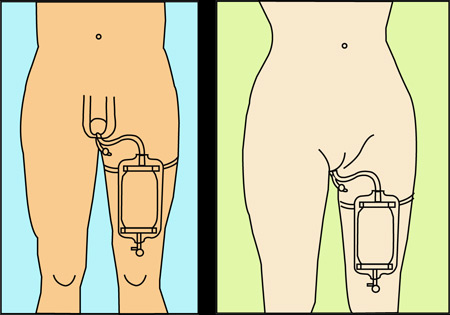Infections that occur anywhere in the urinary tract from the urethra to the bladder are termed as urinary tract infections. Most cases can be treated easily. However, due to high incidence, a large proportion of anti-biotic consumption is attributed to these infections. Since many of these cases can be avoided, we have put together a short feature on Urinary tract infection.
Causes:
Except the urethra, the urinary tract remains sterile, i.e. free of micro-organisms (bacteria, fungi, protozoa). A urinary tract infection is caused when disease causing micro-organisms reach and colonize the urinary tract. This can occur due to sexual intercourse, lack of hygiene, catheterization etc. Catheters are devices inserted into the urethra or even the bladder to help drain urine. It is useful for patients who have lost control over urinary function, are bed-ridden or comatose. 50% of all patients on catheters are reported to develop UTI. This is because:
1. The catheter is inserted deep into the urinary tract giving infectious agents access.
2. The long tube that drains the urine has high surface area that is constantly wet. Bacteria travel upstream from here.
3. Initial insertion and subsequent cleaning of the catheter gives microbes from the environment many opportunities to infiltrate the urinary tract.
Incidence:
50% of all women and 30% of the general population experience UTI in their lifetime. The incidence is higher in females as the urethra is shorter making it easier for microbes to travel upwards and cause an infection. Proximity to the urethra to the anus also increases risk of UTI in females. Incidence is highest in the elderly and hospitalized patients who are put on catheters.
Symptoms:
Symptoms are well documented and include:
– Dysuria – Burning pain during urination.
– Polyuria – Frequent/excessive urination.
– Pyuria – Presence of pus cells/white blood cells (cloudy urine).
– Abdominal discomfort – Bloated feeling.
– Lower back pain – This discomfort may be referred to the lower back.
– Fever.
Diagnosis:
Routine cases can be diagnosed simply going by the above-mentioned symptoms. Many women have trouble holding in urine. Lower back pain too, is more common among women and not considered serious enough to consult a doctor. As a result, cases of UTI may go unreported and the infection can spread to the kidneys turning a routine case into a serious one. In doubtful cases and in cases where primary antibiotics do not work, a urine culture is asked for. Tests are ordered in pediatric, geriatric and hospitalized cases too.
Treatment:
Routine cases are treated with oral antibiotics and are resolved in a week’s time. For cases that do not respond to initial treatment, higher end and injectible antibiotics are used. Urinary tract infections during pregnancy can turn an ordinary pregnancy into a high risk pregnancy. Since many medicines including antibiotics are not considered safe during pregnancy, such cases have to be dealt with swiftly and carefully.
Precautions:
The easiest and most effective precaution one can take is drinking more water.Water helps in flushing out disease causing microbes from the urinary tract. The excess volume of urine formed also means one would not hold urine in longer. This too reduces risk of infection. However, in elderly patients and in those with impaired renal function, fluid consumption is to be kept at a minimum. Such cases are best dealt under the care of a Nephrologist.
Having had a urinary tract infection, one should be sure to complete the entire regimen of antibiotics. Symptoms may be alleviated when the bacterial load goes down. But the few remaining bacteria can thrive if the medication is discontinued and cause an infection again.
Catheters as mentioned above are a leading cause of UTI. Their indiscriminate use leads to a large percentage of UTI cases, especially in hospitals. Catheters are often more convenient for the care givers than the patients. Patients and/or their well-wishers should insist on avoiding catheters unless absolutely necessary. Taking the trouble to walk to the bathroom every time is worth it. Let your doctor know of your concerns so that he pushes his Para-medical staff to follow appropriate aseptic technique for catheter use.
Cranberry juice has been beloved to help in everything from UTI to BPH. Such claims have been questioned by recent studies.
– Punit Pania

